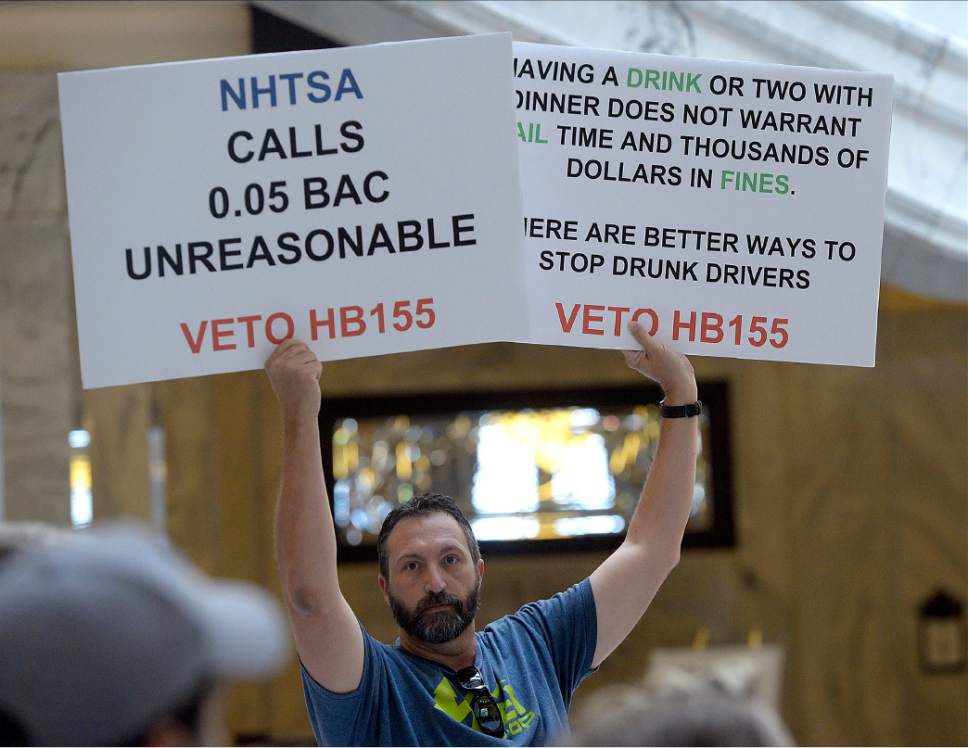This is an archived article that was published on sltrib.com in 2017, and information in the article may be outdated. It is provided only for personal research purposes and may not be reprinted.
Utah lawmakers this year lowered the state's DUI threshold to the strictest in the nation in an attempt to make roadways safer, but a new state report shows drunken driving contributed to about 13 percent of the state's traffic deaths last year.
Speeding and unbuckled seat belts remained Utah's leading factors in fatal crashes, accounting for most of the 281 traffic deaths reported.
The report from Utah's Department of Public Safety shows that speed was a factor in 38 percent of deaths, and unrestrained drivers and passengers played a role in 29 percent of deaths.
Additionally, the report shows teenage drivers, drivers over 65, drivers who failed to yield, motorcyclists and pedestrians all accounted for more fatal crashes than drunken drivers.
The 13 percent of deaths that involved drunken drivers with blood alcohol concentrations of 0.08 or higher.
Rep. Norm Thurston, R-Provo, who sponsored a law this year to lower the state's blood alcohol threshold to 0.05 percent from 0.08 percent, said the change will make people think twice about drinking and driving.
Critics of Thurston's law point out that most DUIs involve people with higher levels of alcohol in their system. They said that lowering the blood-alcohol limit will target responsible drinkers who aren't impaired after a drink or two.
Thurston said Thursday that while his DUI legislation is not the only way make roads safer, it will help.
He says he and law enforcement officials discussed earlier this year how they could make roads safer. They looked at speeding and seat belts but couldn't come up with additional laws that Utah could pass to try to slow drivers and get people to buckle up.
"This would be the one area where we could make some immediate and significant impacts," he said.
When it comes to speed, Utah is one of about a half-dozen states in recent years that raised speed limits on some highways to 80 mph, the highest levels in the nation outside of some stretches of Texas highway that allow drivers to hit 85 mph.
Thurston said lowering the speed limit doesn't necessarily make things safer, because too many drivers still drive at higher speeds. It's more dangerous when the few drivers who adhere to the posted speed limit are going significantly slower than the general speed of traffic, leading drivers who may be following too closely to slam on breaks or make other errors that cause crashes, he said.
Utah requires all drivers and passengers to buckle up. In 2015, the state passed a temporary law allowing drivers to be pulled over if anyone inside had an unbuckled seat belt. Legislators made that a permanent law this year.
Utah's Highway Patrol, which supported the new law, is looking at ways to tackle speed, seat belts, drowsy driving and distracted driving, not just DUIs, Royce said.
Gov. Gary Herbert, who approved the lower alcohol limit in March, said he plans to call lawmakers into a special session later this year to make changes that could include tiered punishments and measures cracking down on distracted driving.
Distracted driving wasn't a factor in as many fatal crashes as alcohol last year, accounting for about 7.5 percent of traffic fatalities.
Utah law allows people to talk on cellphones, but it's illegal to manipulate a phone by hand while driving, whether that's dialing, texting, changing music or using an app.



